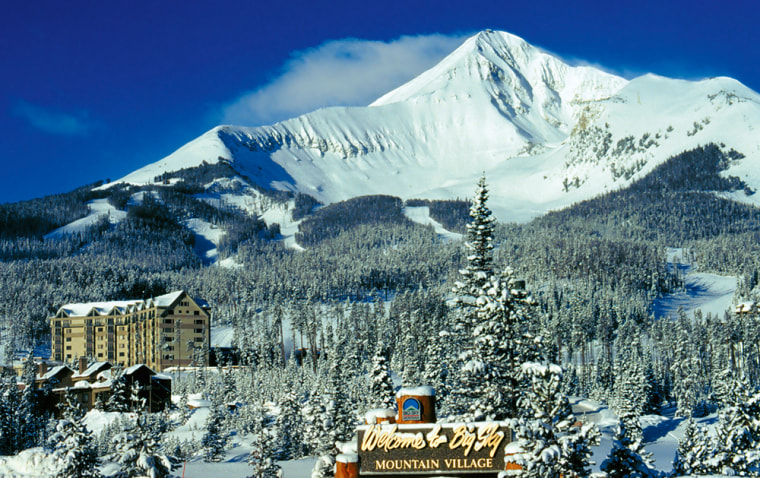Visitors to many ski areas this winter will find cleaner air and better views of mountain landscapes.
Not only are ski resorts pushing legislation in Washington to combat global warming, at least 45 resorts in 14 states from coast-to-coast are using clean energy for some of their operations. Sixteen are getting 100 percent of their power from green energy sources including wind, hydroelectric, solar, bio-mass and geothermal.
“I think we’re a platform industry. We have a bully pulpit to operate from. When you think of global warming the first thing you think of is snowfall and wintertime and how that changes,” said Michael Berry, president of the National Ski Areas Association.
Bear Mountain and Snow Summit will spend $6 million on emission controls, said Bob Roberts, executive director of the California Ski Industry Association.
Aspen will focus on global warming in three upcoming ads in outdoor magazines. “We did talk internally before doing this. We knew it was risky but we want skiing to be around for 100 years,” said Jeanne Mackowski, Aspen’s director of marketing.
The industry is trying to show individuals that they can make a difference, said Berry.
Colorado, which set a record for skier visits last year with 12.53 million skier days, will offer two new gondolas this year.
Breckenridge, the nation’s second-busiest ski resort, has built a gondola connecting the town’s transportation center off Main Street to Peak 7 and Peak 8. The eight-passenger facility, which can carry 3,000 passengers per hour, means fewer people riding buses to the mountain. The resort also has added the highest lift in the nation, the high-speed Imperial Express, which goes to 12,840 feet on the summit of Peak 8.
“It has already raised our profile. The thing the gondola does is connect a great historic mining town with one of the great ski areas of the world. You don’t get too build too many of them in your career. The Imperial Express on the top and the gondola on the bottom are two great bookends,” said Roger McCarthy, Breckenridge CEO.
Aspen’s Snowmass has installed a new gondola to carry snowriders from Fanny Hill to Elk Camp. In addition, the company is replacing the cabins on the Aspen Mountain Silver Queen Gondola with roomier ones with 360-degree views.
Rustic Wolf Creek is adding its first detachable quad — a four-seat chairlift — and remote Silverton Mountain will be open all year for unguided skiing. It had been restricted to guiding skiing until last spring.
Whistler-Blackcomb in British Columbia has installed a high-speed lift to carry riders to the Symphony Amphitheater, 1,000 acres with spectacular high-alpine views. The resort also has purchased Whistler Heli-Skiing, which services over half a million acres of terrain.
Utah, which set a record for the third straight year with slightly more than 4 million skier days, has added several high-speed lifts.
The Canyons near Park City will grow to 3,700 acres with the addition of 200 acres of mostly intermediate to expert terrain that will be served by the DreamCatcher high-speed quad. The resort also is replacing the four-seat Tombstone Express high-speed with a six-pack that will increase uphill capacity 52 percent and reduce congestion.
Snowbird is opening a ski tunnel, the first of its kind in North America. The tunnel’s conveyor lift, at the top of the new high-speed Peruvian Express, will transport snowriders from Peruvian Gulch into Mineral Basin.
Deer Valley is replacing the Sterling triple-chair on Bald Mountain with a high-speed quad. Fourteen new snowguns will allow Park City to open more terrain in the early season. Powder Mountain is replacing its Hidden Lake double chair with a high-speed quad.
Jackson Hole, in Wyoming, retired its legendary tram in October after 40 years. A $25 million tram will be built to replace it, opening in 2008. In the meantime, a temporary two-seater chair will ferry snowriders to the mountain top from one of the existing lifts.
In California, Northstar at Tahoe is adding a six-pack. Alpine Meadows has a new 600-foot long superpipe and a terrain park with more than 25 hits, rails, and quarterpipes.
Big Sky in Montana added 212 acres of open bowl ski terrain accessed from the Lone Peak Tram in an area called Dakota Territories. In Idaho, Sun Valley’s Dollar Mountain will be covered from top to bottom with 44 snow guns.
Ski Santa Fe has the first new chair in New Mexico in several years, a triple that opens up six new trails from the top of Deception Peak.
Mount Bachelor near Bend, Ore., is replacing its most-used lift, the Pine Marten, with a high-speed quad.
Stowe in Vermont will connect Mount Mansfield and its steep terrain with Spruce Peak’s gentler slopes with a Poma lift ride capable of handling 3,400 people per hour. Also in Vermont, a high-speed quad will serve Mount Snow’s new terrain park. Belleayre Mountain in New York’s Catskills has a new high-speed, too.
Back in Colorado, Crested Butte is replacing its East River lift with a high-speed quad. And Steamboat is replacing its Sunshine triple chair with a high speed.
